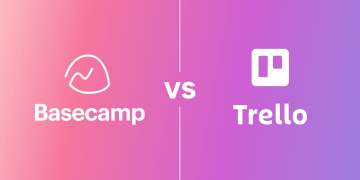In the dynamic world of project management, software solutions like Basecamp have carved a niche as intuitive, minimalist platforms designed to keep teams organized and communication seamless. However, the landscape of modern project management is evolving rapidly. Agile methodologies, with their emphasis on adaptability, iterative delivery, and constant feedback, have become a cornerstone of successful project execution in software development, marketing, and even corporate strategy. This begs a critical question: can Basecamp, known for its simplicity and linear project management approach, meaningfully integrate Agile methodologies? The answer is nuanced, involving both opportunities and limitations.
Understanding Basecamp: Simplicity Over Complexity
Basecamp is celebrated for its clean interface, simplicity, and focus on essential project management tools: to-do lists, message boards, schedules, document storage, and automatic check-ins. Its appeal lies in reducing overhead and encouraging teams to communicate effectively without getting lost in the labyrinth of features common in more complex tools like Jira or Asana.
- Strengths: Basecamp’s minimalist philosophy ensures that teams don’t spend hours configuring workflows or managing dashboards. The built-in tools—task lists, Hill Charts, and centralized message boards—provide visibility without overwhelming users.
- Weaknesses: Agile frameworks often rely on detailed backlog management, sprint tracking, and burndown charts. Basecamp does not natively offer these features, making it appear at first glance as if it sits outside the traditional Agile ecosystem.
Yet, this apparent mismatch does not preclude meaningful integration; it merely requires a creative approach.
Agile Methodologies: A Quick Refresher
Before assessing Basecamp’s compatibility with Agile, let’s briefly revisit what Agile entails. At its core, Agile is less about tools and more about philosophy and process. Agile principles include:
- Iterative Development: Projects evolve through repeated cycles (sprints), delivering incremental value.
- Collaboration and Communication: Teams engage frequently with stakeholders to ensure alignment.
- Flexibility: Plans adjust dynamically to changing requirements.
- Continuous Improvement: Retrospectives and feedback loops guide teams toward greater efficiency and quality.
Agile frameworks such as Scrum and Kanban have codified these principles into repeatable structures, emphasizing metrics, cadence, and transparency.
Mapping Agile Principles onto Basecamp
The first step in integrating Agile into Basecamp is translating Agile concepts into Basecamp’s architecture. While Basecamp lacks native sprint boards or backlog prioritization features, its tools can be creatively repurposed.
1. Task Management as a Sprint Backlog
Agile teams often maintain a product backlog—a prioritized list of tasks to tackle in upcoming sprints. In Basecamp:
- To-Do Lists: Each project can have multiple to-do lists, which can act as sprint backlogs. Tasks can be assigned due dates, owners, and labels.
- Check-ins: Basecamp’s automatic check-in questions can serve as a lightweight daily stand-up substitute, prompting team members to report progress.

The key here is discipline. Teams must consistently update to-do lists to reflect sprint priorities and progress.
2. Message Boards as Communication Hubs
Agile emphasizes frequent, transparent communication. Basecamp’s message boards allow discussion threads by topic, which can mirror Agile ceremonies such as:
- Sprint Planning: Use dedicated threads to discuss upcoming tasks and clarify requirements.
- Sprint Review: Teams can post completed work, feedback, and retrospective notes.
- Backlog Refinement: Conversations about task priorities and dependencies can occur asynchronously on message boards.
3. Hill Charts as Visual Progress Indicators
Basecamp’s Hill Charts are a unique feature that visually depicts task progress. Unlike Gantt charts, Hill Charts focus on conceptual completion—distinguishing between uphill (uncertain, exploratory work) and downhill (execution-ready) tasks.
- Agile Analogy: Hill Charts can serve as a lightweight alternative to burndown charts. They provide a quick sense of whether tasks are conceptually progressing or stuck in ambiguity.
- Limitation: For teams accustomed to detailed velocity tracking, Hill Charts are less precise. They show direction and conceptual completion but not task-by-task progress quantitatively.
4. Milestones and Schedules as Sprint Planning Tools
Agile projects often operate in fixed-length sprints, typically two to four weeks. Basecamp’s schedule and milestone features can:
- Serve as sprint calendars, marking start and end dates.
- Track deadlines for deliverables, demos, or review sessions.
- Provide visibility to stakeholders outside the immediate team.
5. Automated Check-ins for Agile Rituals
Basecamp’s automatic check-in questions allow teams to ask recurring questions such as:
- “What did you accomplish yesterday?”
- “What are you working on today?”
- “Are there any blockers?”
This mirrors the daily Scrum, but asynchronously. While it lacks face-to-face interaction, it provides a written record and can reduce meeting fatigue.
Challenges of Agile Integration in Basecamp
While Basecamp can support Agile principles, there are inherent challenges:
- Limited Backlog Prioritization: Basecamp’s to-do lists do not natively support ranking or filtering by priority, making backlog grooming less efficient.
- Absence of Detailed Metrics: Metrics such as velocity, sprint burndown, or cumulative flow diagrams are not available.
- No Native Kanban Boards: Agile teams using Kanban may find Basecamp’s visual tools insufficient for tracking workflow stages dynamically.
- Scaling Issues: For large teams or multi-team projects, Basecamp’s lightweight approach can struggle to maintain visibility across complex interdependencies.
These limitations mean that teams serious about Agile metrics may need complementary tools or disciplined manual workarounds.
Strategies for Effective Agile Implementation in Basecamp
Despite limitations, several strategies can make Agile work meaningfully in Basecamp:
1. Use To-Do Lists Strategically
- Divide lists by sprint or feature.
- Use checklists for subtasks to track incremental progress.
- Regularly archive completed items to maintain clarity.
2. Enhance Visual Tracking
- Use Hill Charts for conceptual progress.
- Color-code tasks or labels to reflect priority or status.
- Integrate third-party visualization tools if quantitative metrics are essential.
3. Schedule Agile Ceremonies Virtually
- Use Basecamp’s message boards for asynchronous planning, reviews, and retrospectives.
- Leverage recurring check-ins to replace daily stand-ups.
- Encourage concise, structured updates to reduce noise.

4. Encourage Discipline and Documentation
Agile thrives on transparency. Basecamp’s minimalist interface requires teams to be disciplined about:
- Updating task statuses.
- Documenting decisions on message boards.
- Linking tasks to relevant documents.
5. Complement with External Tools
For teams needing metrics, Kanban boards, or detailed backlog management, Basecamp can integrate with tools like:
- Trello (Kanban)
- Jira (Scrum metrics)
- Google Sheets (custom reporting)
This hybrid approach maintains Basecamp’s simplicity while providing the granular control Agile demands.
Real-World Use Cases
Several teams have experimented with Agile in Basecamp successfully:
- Small Marketing Teams: Using Basecamp’s check-ins and task lists to run two-week sprints, focusing on content creation and campaign launches.
- Software Startups: Tracking feature development in to-do lists, visualizing progress with Hill Charts, and holding asynchronous sprint reviews.
- Remote Teams: Leveraging message boards to conduct retrospectives across time zones, replacing in-person meetings with structured asynchronous communication.
The common factor is adaptation. Teams succeed not by forcing Basecamp to mimic Jira or Trello, but by interpreting Agile principles in ways compatible with Basecamp’s design philosophy.
Philosophical Alignment: Agile Mindset vs Tool Features
It’s important to remember that Agile is a mindset, not a checklist. Basecamp aligns with Agile principles in several philosophical ways:
- Communication over tools: Basecamp prioritizes human communication, which is central to Agile.
- Simplicity and focus: Avoiding unnecessary complexity aligns with Agile’s principle of maximizing work not done.
- Iterative progress: Hill Charts and to-do lists naturally encourage incremental progress and reflection.
In essence, Basecamp may lack formal Agile scaffolding, but it provides an environment conducive to Agile thinking if teams approach it intentionally.
When Basecamp Might Not Be Enough
While Basecamp can integrate Agile meaningfully, there are scenarios where it may fall short:
- Large-scale Scrum Implementations: Organizations with multiple interdependent teams may require more advanced tools like Jira or Azure DevOps.
- Strict Metric Tracking Requirements: If detailed velocity, burn-up, and burndown metrics are mandatory, Basecamp alone will not suffice.
- Complex Product Backlogs: Managing hundreds of tasks with dependencies is cumbersome without native backlog management.
In these cases, Basecamp works best as a lightweight complement rather than a standalone Agile platform.
Conclusion: A Meaningful Integration is Possible, but Intentional
Basecamp’s simplicity is both its greatest strength and its biggest limitation when it comes to Agile integration. While it lacks native Scrum or Kanban features, creative adaptation allows teams to:
- Run sprints using to-do lists and schedules.
- Conduct asynchronous stand-ups with check-ins.
- Visualize progress using Hill Charts.
- Maintain transparent communication through message boards.
The key is discipline and intention. Teams that succeed do not try to make Basecamp a clone of Jira; instead, they embrace Agile principles and reinterpret them through Basecamp’s minimalist lens. For small to medium teams, especially those valuing clarity and communication over metrics-heavy tracking, Basecamp can serve as a surprisingly effective Agile-friendly tool.
Ultimately, meaningful Agile integration in Basecamp is less about the software and more about the mindset. By focusing on incremental progress, continuous feedback, and transparent collaboration, teams can enjoy the best of both worlds: Basecamp’s simplicity and Agile’s adaptability.























